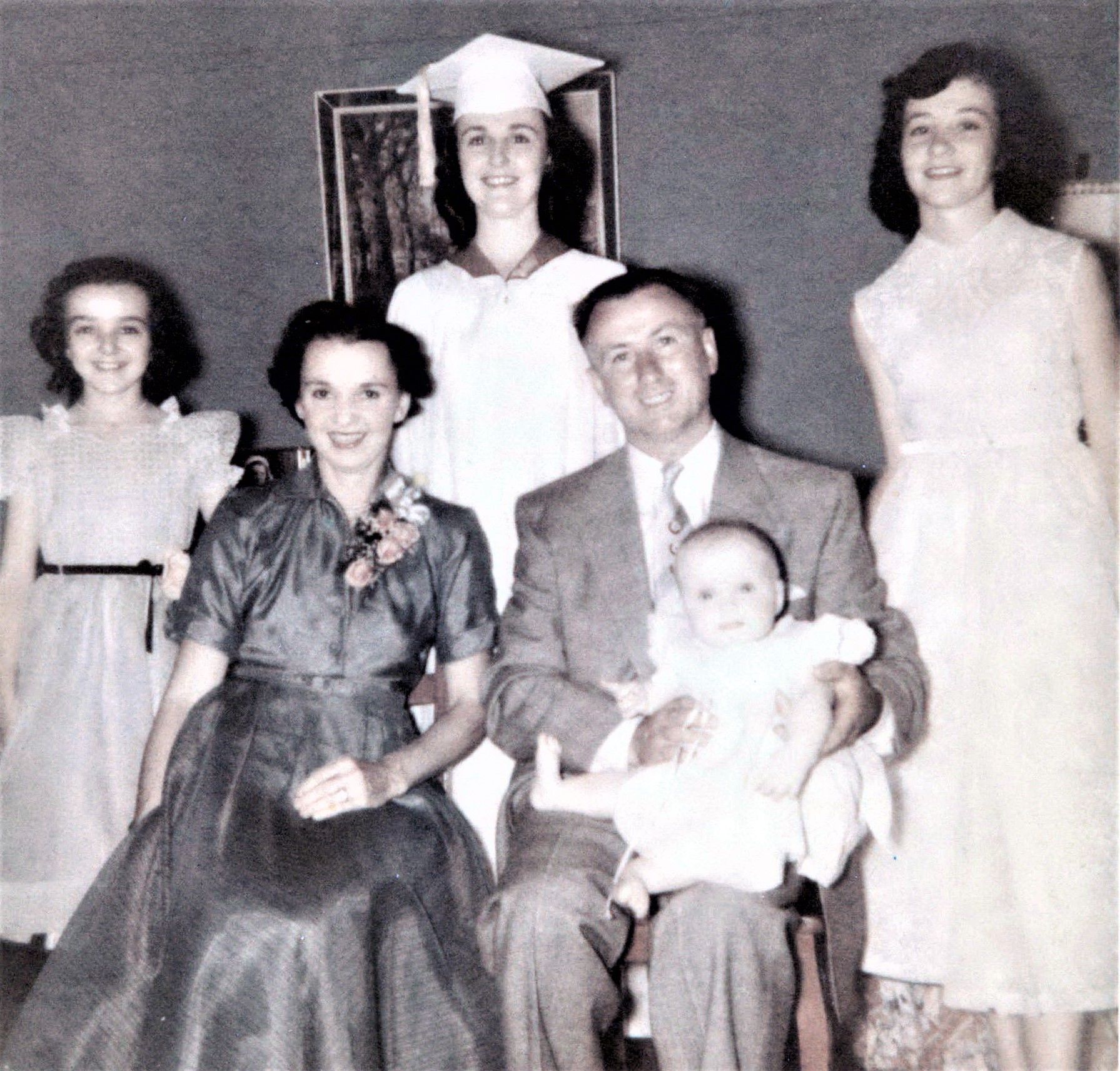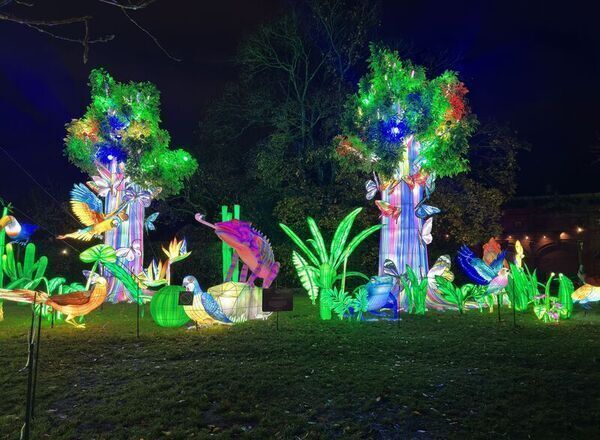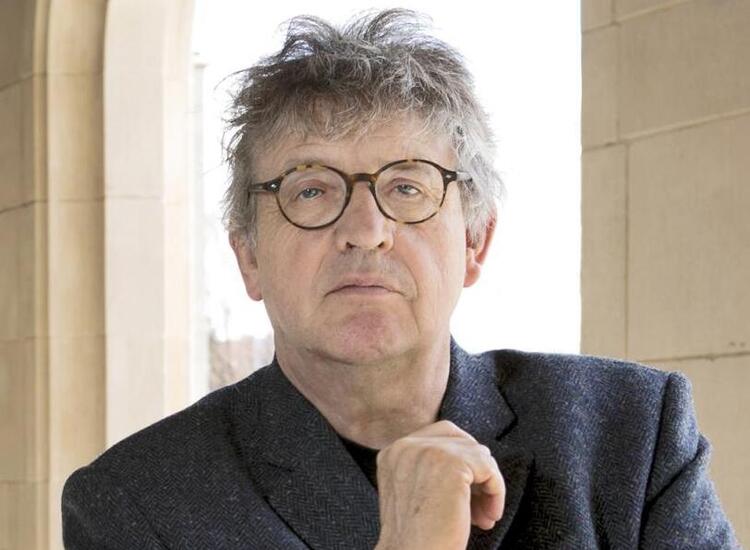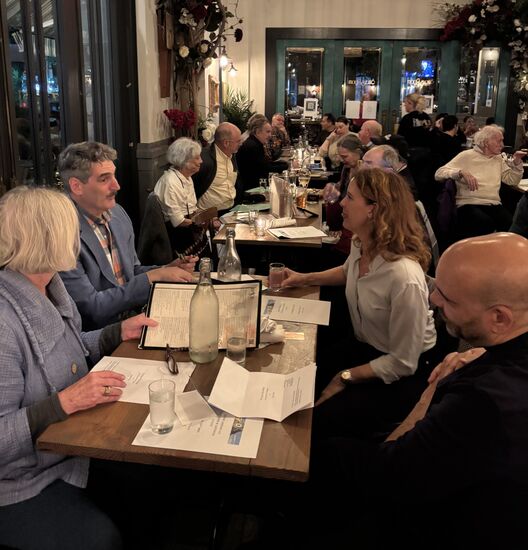Joanne Dillon’s family pilgrimage to Staten Island was a lifetime in coming.
The last one took place during World War II, a day trip from the Bronx before she was born.
She grew up hearing about Great Aunt Kate, and her parrot, that she lived on the top floor of a three-decker house, had a wood-burning stove in the kitchen, and a back porch where the wood was stored. One living source is a sister, Terry, who was 4 in 1942. “It was the first time she’d been on a boat,” she said, referring to the Staten Island Ferry ride that followed the subway journey to the tip of Manhattan.
The more recent visit, in May 2023, was to Great Aunt Kate’s grave in St. Peter’s Cemetery, and the small traveling party had been put together with the help of DNA technology.
Dillon, the youngest of four daughters of parents from County Kerry, was an English major who rose in the field of corporate communications and eventually retired from J.P. Morgan Chase. But that was the day job. She’s long had a passion for genealogy. These days, she handles publicity for the Long Island-based Irish Family History Forum [ifhf.org].
About a dozen years ago, Dillon encountered members of the forum at a genealogy fair. “They gave out samples of the newsletter and I was very impressed,” she recalled. It continues to impress and regularly wins national awards.
The organization is clearly a dynamic one with almost 400 members, including some overseas – but it would very much like an infusion of younger people on Long Island.
“’Younger’ in our definition would be somebody over the age of 50, but not over the age of 70,” she said, with a laugh.
The IFHF adapted well to the Zoom era, and has kept the format available for members for the monthly Saturday morning meetings. February’s meeting will take place this Saturday in a new in-person venue, Freeport Memorial Library. Claire Bradley, who is Director of Irish Studies at the International Institute of Genealogical Studies, will speak on “DNA in Irish Family History.”
There are a couple of practical examples of the new technology described in articles in the February-May 2025 edition of the Newsletter of the Irish Family History Forum, most notably Ann Carroll’s “Finding an Ancestor and a Tenement Tragedy.” DNA has enabled the writer, who has a science background, to investigate a fatal incident in Brooklyn in 1892 and to connect with living cousins.
In another piece, Dillon goes on a paper trail looking for details of Great Aunt Kate’s life, but also cites DNA as it has put her in touch with living relatives who have a connection to the woman who died in 1948.
Zoom has allowed Dillon to become an IFHF committee member in recent years, although she’d long been a member of the newsletter staff. “I don’t drive,” said the one-time resident of Bay Ridge, Brooklyn, who relocated to Great Neck, L.I., to be closer to family members. She’s only been to just a handful of IFHF meetings in person, though she has gone on walking tours and attended other special events.
An in-person advantage for attendees is the one-on-one tips session offered by members, many of whom are accredited genealogists. Another selling point is the membership fee -- a reasonable $30 in a pastime that can be expensive.
The virtual dimension allows for top speakers from afar, such as Bradley and in November 2024, Steven Smyrl, one of Ireland’s leading genealogists and a probate specialist, who starred in an RTE series with his brother called “Dead Money.”
“He did an excellent presentation,” Dillon said, “I could have listened to him all day. He was talking about tracking down wills in Ireland.
“I’ll have to go back to my notes,” she added about Smyrl’s talk. “Supposedly my grandfather was disinherited by his father for marrying my grandmother.”
Joanne Dillon has found a good deal of information about both sides of her family in Kerry over the decades. The most important facts, upon which everything else is built, are that her father, James Dillon, was born in Listowel in 1907, while her mother Theresa, also a Dillon, and also from Listowel, was born three years later. He was reticent about the past, but she wasn’t at all, and so their genealogist daughter has spent much time finding out what Jim was not telling and following up and sometimes confirming Tess’s stories.
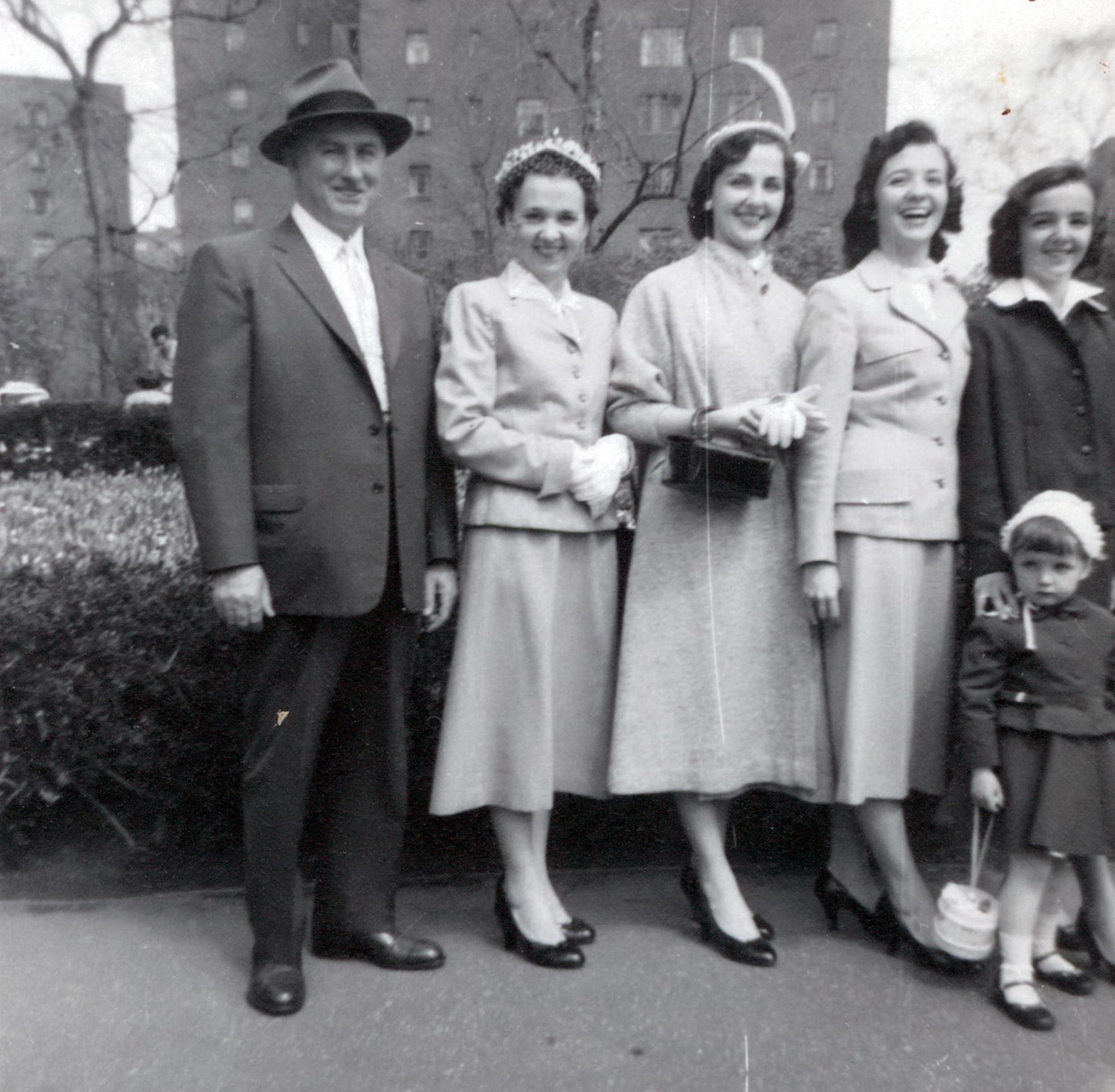
Joanne Dillon pictured with her parents and three older sisters in Parkchester, Bronx, at Eastertime 1956.
She has her own particular relationship with the generations in that her parents were old enough to be her grandparents. Her oldest sister, Bridget, was 18 years her senior, while the third-born, Patricia, was 11 when the youngest was born, and Terry was the longtime middle child. (Bridget "Bea" [Dillon] Richards died on Dec. 22, 2024, at the age of 89. She lived in N. Andover, Mass.)
James Dillon maintained links with family back home and made plane journeys to visit his mother, who died in 1968, but the conductor in the IRT subway system was less attentive in America.
“My father didn’t stay in touch with a lot of his family. My sisters remember them from the 1940s and ‘50s. By the time I came along they were hither and yond. I didn’t know these people,” Joanne Dillon said. “I would hear stories about them but I didn’t know them. My mother had stories about them. They all grew up together in Ireland.”
Joanne Dillon was always less interested in building a family tree than in learning more about those people she’d heard about. She wondered, “Are the stories true? Are they not true? Are they half-true?”
DNA opened up new worlds -- to connections who survived the 1906 earthquake in San Francisco, were transported to Tasmania in the late 18th century, and lived in Paris, Bourbon County, Ky., on the eve of the Civil War.
But there were no soap opera-like revelations closer to home. “I haven’t had anything unexpected,” Dillon said. “I haven’t had anybody pop up as half-sisters or brothers.”
The DNA tests did, however, bring her to cousins whose parents and grandparents were once part of the same extended family.
James Dillon, at the time AKA “Jamesie,” came to America in 1927 at age 20 on the SS “Celtic”; while his 17-year-old sister Mary, known as “Moll,” traveled earlier in the year on the SS “Baltic.” Here’s where having older parents has made a difference – Dillon is first-generation American, her traveling companions on the Staten Island trip are in her age category, but are second-generation. Patsy and Cathy, first cousins living in Queens, are Moll’s granddaughters; and so James’s daughter Joanne is their first cousin once removed. DNA brought them together, and also Kate to Patsy and Cathy, who didn’t grow up hearing about their grandmother’s aunt.
The reason that they made the Staten Island trip was that Great Aunt Kate had made it all possible. As soon as Moll disembarked, she made her way to Aunt Kate, her father’s sister, on Fairview Avenue on Staten Island; James did when his turn came later in the year. They were preceded by Mike and Pat in 1924 and 1925, and Nell, with her husband and infant, were also welcomed in 1927.
Joanne Dillon was paying attention when she was growing up. She heard about the Dillons, and the Dillanes, which is what her mother called her father’s family, something that was backed up by documentary evidence, (and the scientific evidence has shown that her parents weren’t even distantly related).
She spent an entire summer in Ballybunion in 1966, making regular trips to Listowel, “It gave me a glimpse into what it would’ve been like,” she recalled, “because not too many people had cars. They had bicycles and had pony and traps.”
Then in 1972, she studied English at Trinity College Dublin for the summer.
“It was always in the back of my mind to write a family history,” Dillon said. Her immersion into the world of genealogy happened very gradually over time.
One milestone was going to the 1993 Broadway production of “Translations,” by Brian Friel, which starred Brian Dennehy and Dana Delaney. One character is a hedge-school teacher, and Dillon’s great-grandfather was named Michael Lynch, master of the Pike School, a hedge school near Rathea, outside Listowel in the late 1860s and early ’70s. He had trained to be a teacher in Dublin, and became the first master of Rathea National School when it opened about 1873. He retired about 1910. Although that was post-Famine as opposed to before it in “Translations,” this got her thinking about Michael’s life and she eventually found pictures of the school online.
After a while, Dillon was on the Ancestry.com path, putting together what was then available from online sources. It led to re-connection with the family of her mother’s sister Rita, who went to England in the late 1930s, and while the two remained in contact during their lifetime, Dillon was interested to hear from descendants about her aunt’s life, particularly during the Second World War.
DNA revealed the close Queens connections, but also led her to find all sorts of interesting people further away. Two distant cousins, for instance, are writers who’ve incorporated genealogy in their work. Craig Kannalley did a video about his roots when he was a reporter for Huffington Post. At the time, he lived close to Dillon in Bay Ridge, but he had relocated to Buffalo before they were in contact.
Dillon had dinner with Mary Jones – whom a DNA test has said is her fourth cousin – when she made a trip to New York from Wales. She writes mystery novels as MK Jones, and has thanked her American cousin in the acknowledgements of her latest book. “It was lovely to meet her,” the New Yorker said.
Family lore, however, and the archives are the sources for her knowledge about Great Aunt Kate.
One record suggests that Kate was born in 1870, which would mean she was 40 when she married an Irish-American named John Francis Cook in 1910, and not the 28 recorded alongside his 25.
Dillon has written in the latest issue of the IFHF’s newsletter, “Tracing Kate’s life has been challenging. She seems to have lived a very quiet life. She and her husband had no children. The few remaining records are rife with contradictions.”
But she has an important legacy.
“Today the descendants of Mike, Pat, Moll, Nell and James are scattered across the U.S. from California to Maine,” Dillon writes. “They have successful careers in education, hospitality, financial services, graphic arts, accounting, zoology, sales, social work and many other professions.
“Without a doubt, they owe Kate (Dillane) Cook an immense debt of gratitude. Kate and her husband opened their home to my father and my paternal aunts and uncles 100 years ago and set the Dillanes from Dromerin on the path to becoming Americans.
“Thank you, Great Aunt Kate!”

